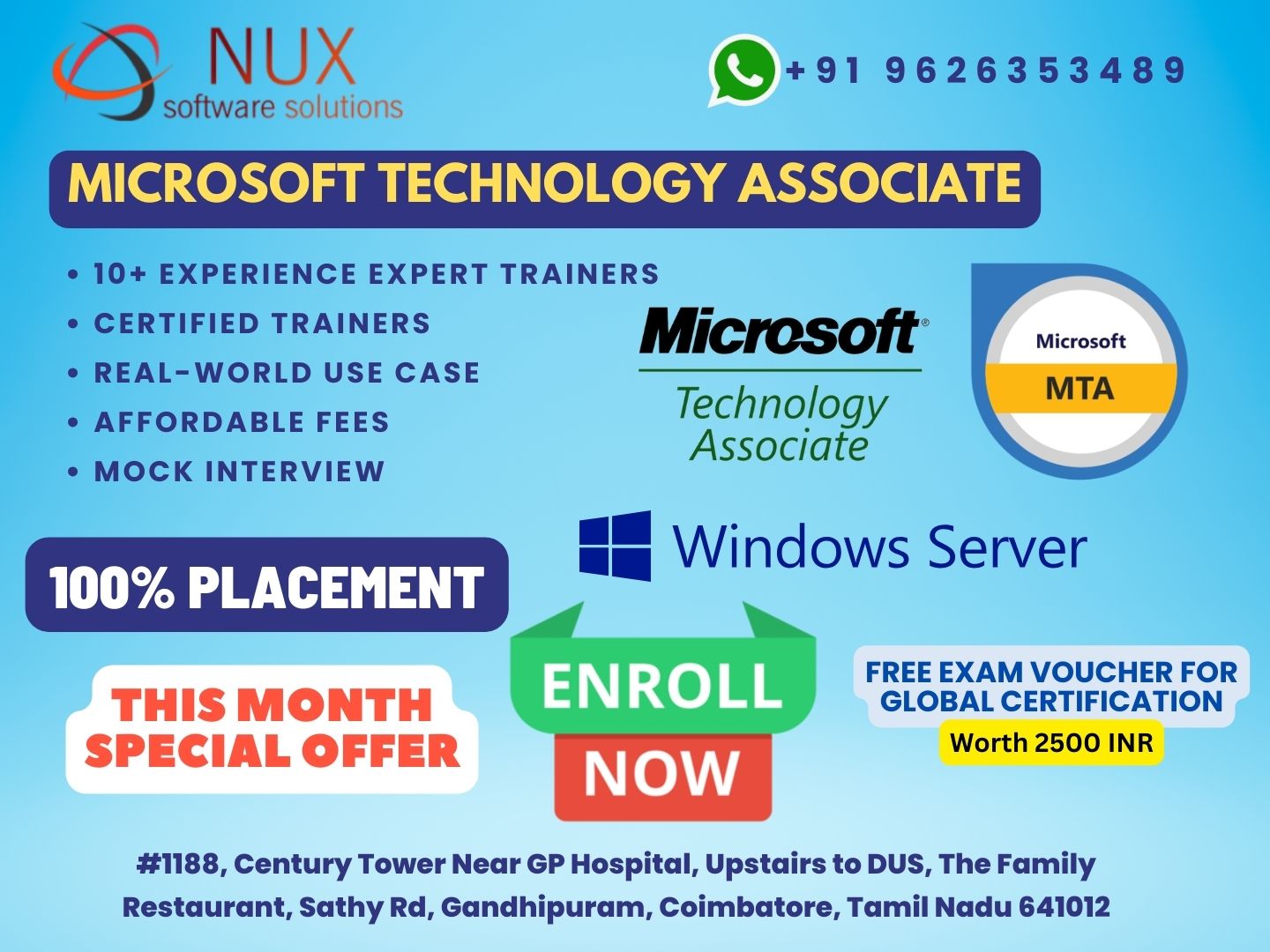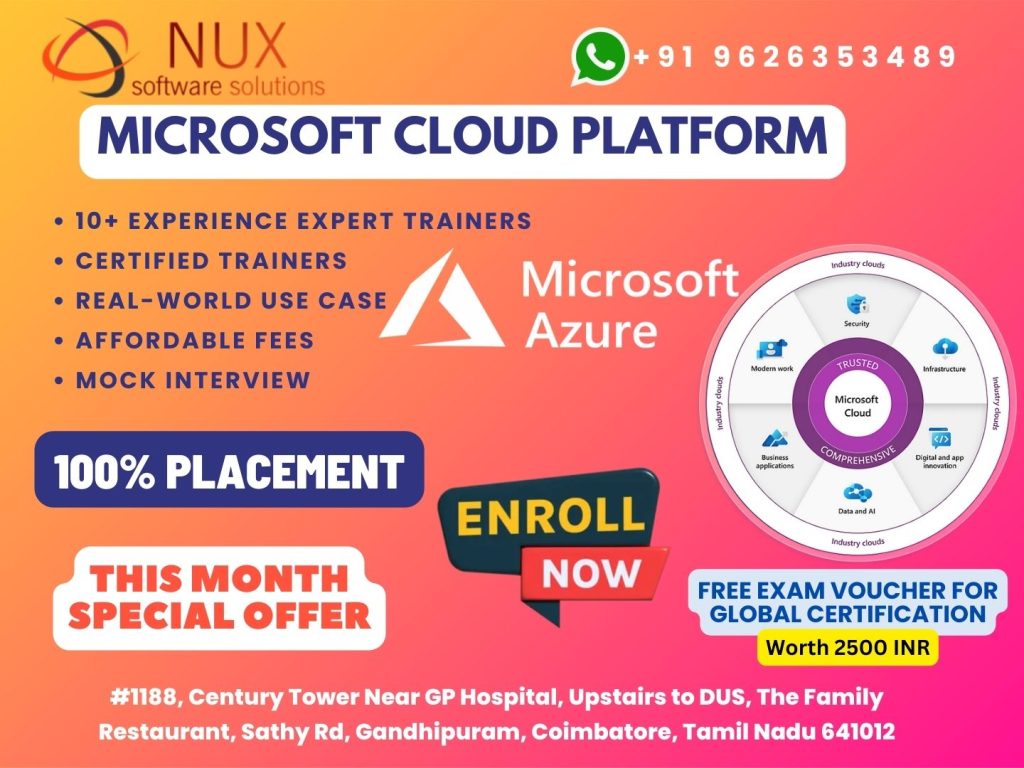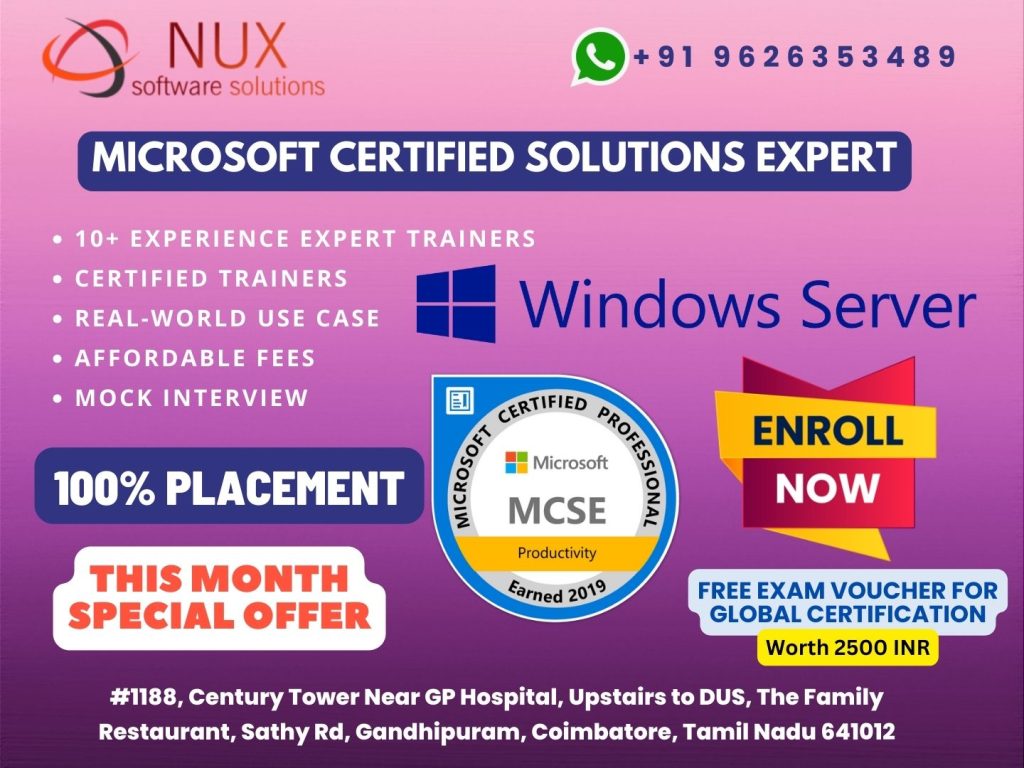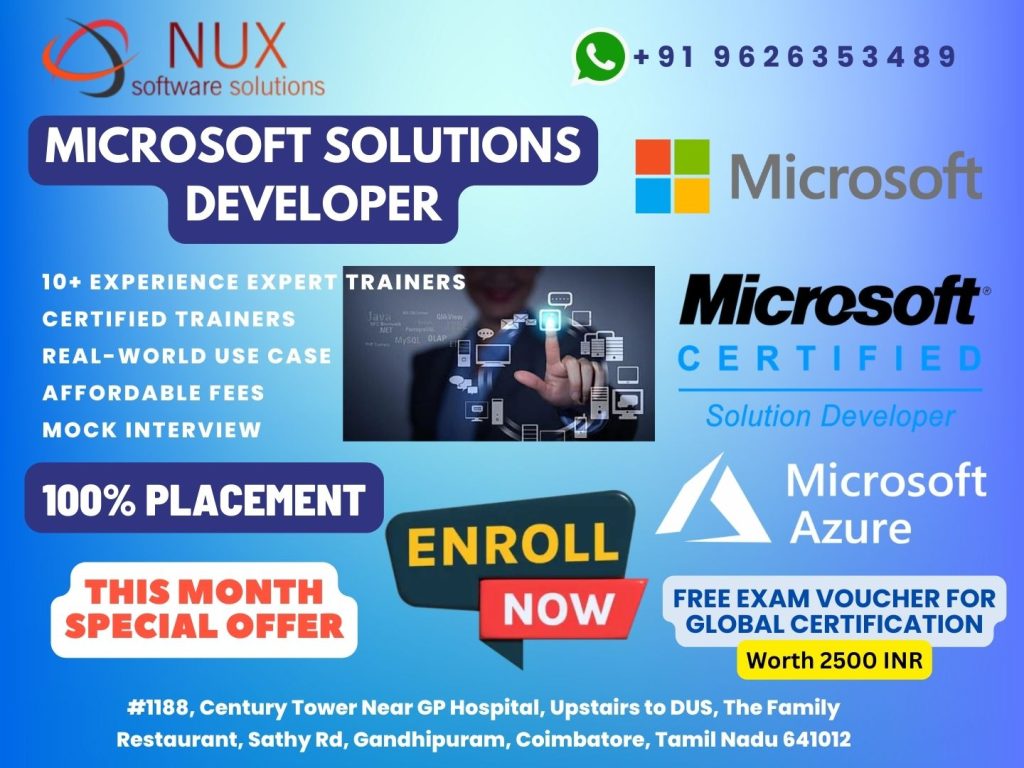Microsoft Technology Associate (MTA)

Course Summary
The Microsoft Technology Associate (MTA) certification was designed as an entry-level qualification for individuals starting a career in IT, software development, cloud, or databases. It introduces learners to the core concepts of Microsoft technologies and helps build a strong foundation for more advanced certifications like MCSA, MCSE, or Microsoft role-based paths (e.g., AZ-900, DP-900, etc.).
Although officially retired by Microsoft, MTA still holds relevance as a learning framework and resume booster for freshers or students beginning their Microsoft technology journey.
Why Choose This Course
MTA training is perfect for those who are new to technology but want a structured, practical introduction to the Microsoft ecosystem. This course offers:
Beginner-friendly coverage of key IT and development fundamentals
Exposure to real-world applications in Windows, databases, software, and cloud
A strong starting point for pursuing Microsoft career certifications
Practical labs and simplified examples led by instructors with hands-on experience
Flexibility to choose from specialized MTA paths based on your interest
This course is designed to build confidence and clarity for those stepping into tech.
Who Should Enroll
This course is ideal for:
Students and fresh graduates seeking an entry-level IT or development certification
Beginners wanting to understand Microsoft’s foundational technologies
Non-technical professionals exploring a career in software or IT support
School/college learners preparing for professional certifications and internships
Anyone planning to transition into Microsoft’s modern cloud and development stack
Skills You Will Gain
Understanding of basic networking, operating systems, and IT concepts
Knowledge of software development principles, coding basics, and .NET
Foundational skills in SQL databases, data storage, and querying
Familiarity with cloud concepts, Azure, and deployment models
Confidence to pursue higher-level certifications like AZ-900, MS-900, DP-900, or SC-900
Career Benefits
By completing this training, you will:
Be ready for entry-level jobs or internships in IT support, helpdesk, or junior developer roles
Build the groundwork for more advanced certifications such as MCSA, Azure Fundamentals, or Microsoft 365
Gain the technical vocabulary and concepts needed to succeed in IT interviews and job tests
Be well-prepared to specialize further in cloud, data, networking, or software development
Start your professional tech journey with a structured and recognized skill base
Start Your Tech Journey with Microsoft Fundamentals
Whether you want to enter IT support, learn to code, or understand cloud computing, MTA training is your first reliable step into the Microsoft technology universe.
Enroll now and build your career with confidence.
Microsoft Technology Associate (MTA) Syllabus
Modules
Chapter 1 - Understanding network infrastructures
1. Understand the concepts of Internet, intranet, and extranet
- Virtual Private Network (VPN), security zones, firewalls
2. Understand local area networks (LANs)
- Perimeter networks; addressing; reserved address ranges for local use (including local loopback IP), VLANs; wired LAN and wireless LAN
3. Understand wide area networks (WANs)
- Leased lines, dial-up, ISDN, VPN, T1, T3, E1, E3, DSL, cable modem, and more, and their characteristics (speed, availability)
4. Understand wireless networking
- Types of wireless networking standards and their characteristics (802.11a,b,g,n,ac including different GHz ranges), types of network security (WPA, WEP, 802.1X, and others), point-to-point (P2P) wireless, ad hoc networks, wireless bridging
5. Understand network topologies and access methods
- Star, mesh, ring, bus, logical and physical topologies
Chapter 2 - Understanding network hardware
1. Understand switches
- Transmission speed, number and type of ports, number of uplinks, speed of uplinks, managed or unmanaged switches, VLAN capabilities, Layer 2 and Layer 3 switches and security options, hardware redundancy, support, backplane speed, switching types and MAC table, understand capabilities of hubs versus switches, virtual switches
2. Understand routers
- Transmission speed considerations, directly connected routes, static routing, dynamic routing (routing protocols), RIP vs. OSPF, default routes; routing table and how it selects best route(s); routing table memory, Network Address Translation (NAT), software routing in Windows Server, installing and configuring routing; Quality of Service (QoS)
3. Understand media types
- Cable types and their characteristics, including media segment length and speed; fiber optic; twisted pair shielded or unshielded; catxx cabling, wireless; susceptibility to external interference (machinery and power cables); susceptibility to electricity (lightning), susceptibility to interception
Chapter 3 - Understanding protocols and services
1. Understand the Open Systems Interconnection (OSI) model
- OSI model; Transmission Control Protocol (TCP) model; examples of devices, protocols, applications, and which OSI/TCP layer they belong to; TCP and User Datagram Protocol (UDP); well-known ports for most used purposes (not necessarily Internet); packets and frames
2.Understand IPv4
- Subnetting, IPconfig, why use Internet Protocol version 4 (IPv4), addressing, ipv4toipv6 tunneling protocols to ensure backward compatibility, dual IP stack, subnetmask, gateway, ports, packets, reserved address ranges for local use (including local loopback IP)
3.Understand IPv6
- Subnetting, IPconfig, why use IPv6, addressing, ipv4toipv6 tunneling protocols to ensure backward compatibility, dual IP stack, subnetmask, gateway, ports, packets, reserved address ranges for local use (including local loopback IP)
4.Understand names resolution
- DNS, resource records, Windows Internet Name Service (WINS), steps in the name resolution process, HOSTS file, LMHOSTS file
5.Understand networking services
- Dynamic Host Configuration Protocol (DHCP), Network Address Translation (NAT), firewalls, remote access, VPN
6.Understand TCP/IP
- Tools (such as ping), tracert, pathping, Telnet, IPconfig, netstat, reserved address ranges for local use (including local loopback IP), protocols



